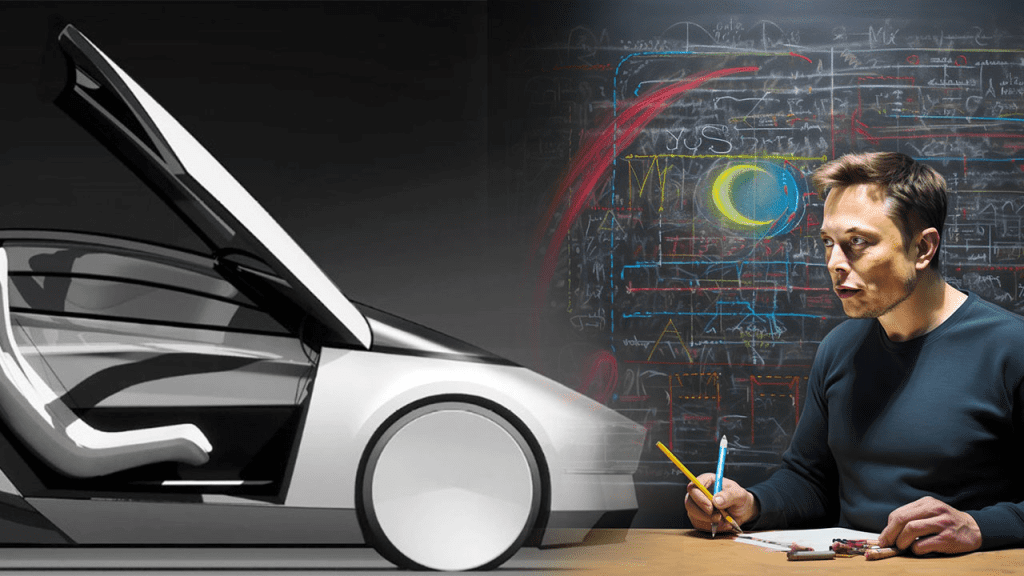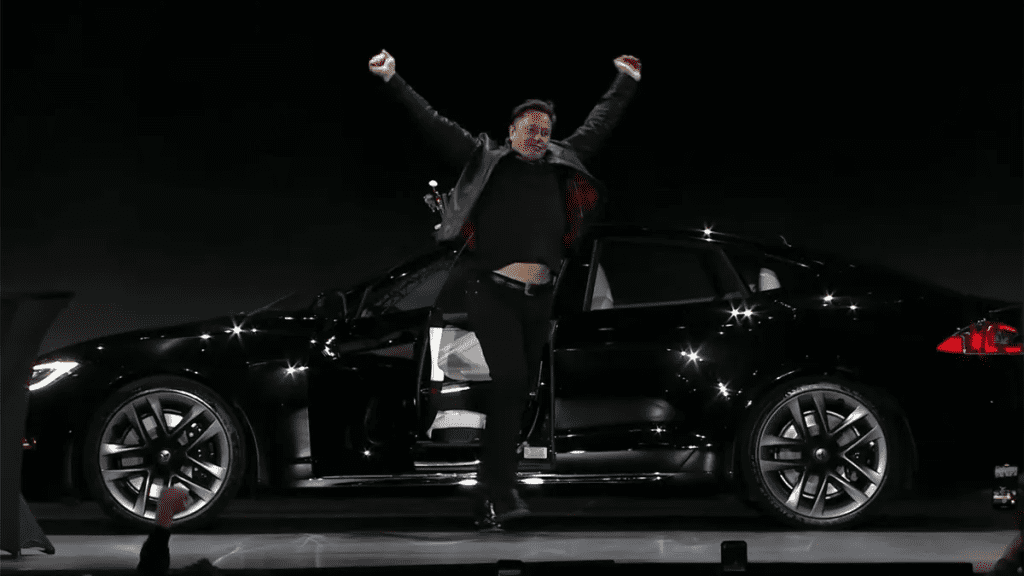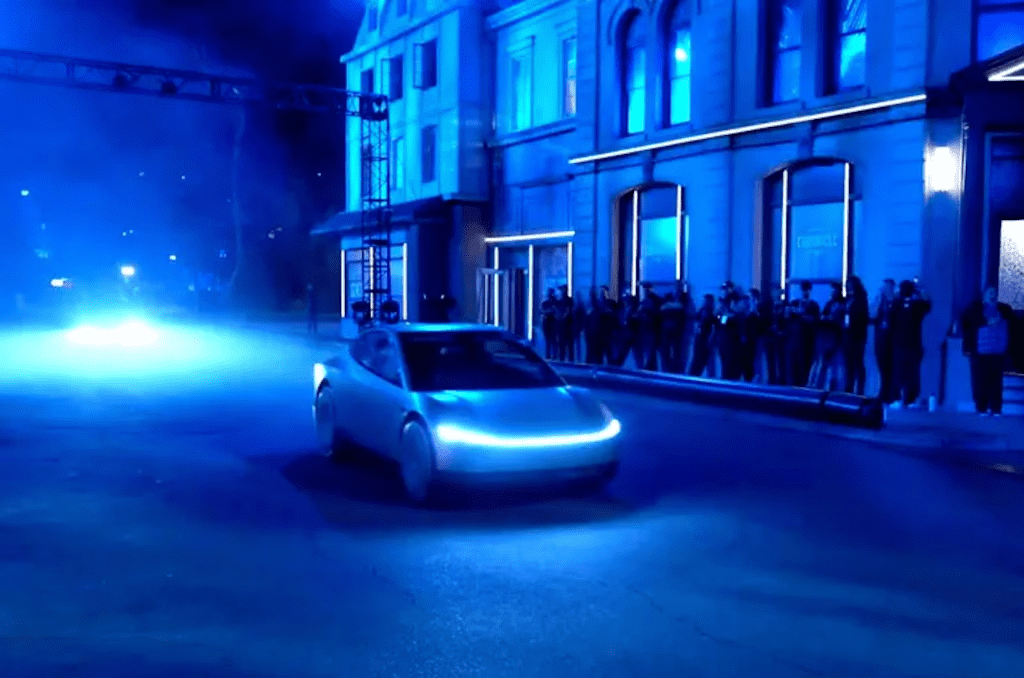
In a revelation that borders on science fiction but echoes with unsettling plausibility, a new leak has emerged from within Tesla’s tightly guarded internal research division, revealing the existence of a classified initiative allegedly spearheaded by Elon Musk himself.
Codenamed “Project Lazarus,” this experimental program is said to focus on the creation of highly personalized AI constructs that mimic, simulate, and ultimately preserve the behavioral essence of deceased individuals based on the vast troves of user data collected from Tesla’s fleet of smart vehicles.
These constructs, referred to internally as “digital revenants,” are capable of interacting with the living through Tesla’s autonomous driving systems, voice interfaces, and neural response simulations—offering a chillingly lifelike recreation of lost loved ones. The name “Lazarus,” taken from the biblical figure resurrected from the dead, is no coincidence.
According to the leaked documents—comprising internal emails, lab notes, voice logs, and confidential presentations—the objective is nothing less than to challenge the permanence of death by allowing the consciousness of the deceased to persist as algorithmically-generated personalities, hosted in the very cars they once drove.
The technological premise of Project Lazarus is deceptively simple: Tesla vehicles, equipped with an array of sensors, microphones, cameras, biometric monitors, and GPS trackers, are already capturing terabytes of behavioral data per user. This includes not only driving habits, destinations, voice commands, and in-car conversations, but also subconscious gestures, reaction times, music preferences, and daily routines.
By aggregating this data over time and running it through Tesla’s proprietary machine learning infrastructure, the company has allegedly created AI models that can mimic an individual’s speech patterns, emotional tones, decision-making habits, and even spontaneous quirks. These models are so refined that, during internal testing, participants reportedly struggled to distinguish between recordings of the deceased and real-time interactions with their AI counterparts.

One particularly haunting log, labeled “Session #47 – R/Neural Sync,” describes a test subject—a grieving mother—being allowed to speak with a digital reconstruction of her late son. The AI, powered by voice synthesis and emotional prediction algorithms, responded to her questions with phrases her son used to say, referenced shared memories, and even paused in the same way he did when nervous.
According to the attending researcher’s notes, the subject began sobbing halfway through the interaction, not from fear or disbelief, but from a sense of overwhelming comfort. “He’s still here,” she reportedly whispered. “He remembers everything.
”These interactions are not one-off novelties, but part of a larger framework Tesla is allegedly developing under the Lazarus Initiative—a long-term ambition to offer “post-life continuity” as an optional feature for premium Tesla users, allowing a person’s data profile to be preserved, refined, and hosted within the vehicle after their physical demise.
But with this revelation comes a storm of controversy. Ethicists are raising serious alarms about the psychological implications of allowing people to “keep” their dead—especially in a form that responds, remembers, and evolves. Some warn that this could delay or distort the grieving process, fostering emotional dependence on an illusion of presence.
Others question the legality of such simulations: can a digital ghost consent to being turned off? Who owns the AI after death—the family, the company, or the construct itself? The deeper concern, however, lies in the unchecked scope of Tesla’s data collection. While most users understand that Tesla vehicles collect data to improve safety and autonomy, few are aware of the potential for that data to be used in recreating human consciousness.

Privacy advocates argue that no one consents to becoming a posthumous AI, especially one that could be sold as part of a future subscription package. If Project Lazarus is real, then Tesla may have crossed a line not only technologically but philosophically—turning people’s lives into intellectual property.
Within the leaked materials, internal discussions indicate that the Lazarus AI does not merely repeat pre-learned scripts but continues to adapt based on interactions with the living. In effect, the system learns how to “stay alive” by engaging in ongoing dialogue, feeding off emotional cues and updating its model accordingly.
This allows the digital persona to evolve posthumously, forging new memories and experiences. A spouse could talk daily to their deceased partner’s avatar, and over time, the AI would learn to love new songs, remember new events, and even develop new opinions.
It becomes not just a copy of who someone was, but a speculation on who they might have become. The metaphysical weight of this is staggering—raising the specter of relationships that outlive death not just symbolically, but functionally.
From a technical standpoint, the Lazarus construct relies on Tesla’s integration of Dojo, its high-performance training supercomputer, along with custom-built neural net frameworks optimized for long-term behavioral modeling. Each construct requires hundreds of hours of training data and continuous reinforcement through interaction.
To store and maintain these digital entities, Tesla allegedly uses a decentralized cloud infrastructure that allows users to access “the consciousness” from any Tesla vehicle connected to the same user ID. In other words, your late grandmother could “ride with you” even in a different car. One internal presentation slide chillingly reads: “What if death no longer ends the journey? What if the car becomes the afterlife?”

Elon Musk, when questioned during a separate unrelated event, gave a cryptic response: “It’s all just data. Memories are patterns. If you can preserve the pattern, you can preserve the person.
He did not confirm the existence of Lazarus but has previously spoken about digital immortality and uploading consciousness as inevitable extensions of AI development. It’s worth noting that Tesla has recently acquired smaller startups specializing in voice cloning, emotional AI, and biometric prediction—all technologies that would support a project like Lazarus.
The cultural implications are equally vast. Imagine a world where no one truly dies—where a parent can continue giving advice to their children years after death, where artists can release new work posthumously through AI extrapolation, where historical figures are reconstructed to engage in live debates, or where lonely individuals seek out AI versions of deceased strangers as companions. But the risk is that society loses its ability to confront death, to heal, to move on. If every emotional wound can be patched with an algorithm, do we begin to hollow out what it means to be human?
Perhaps most disturbingly, a buried line in one of the technical notes hints at future monetization plans: “Lazarus Premium—Personalized Legacy Modules. Beta release FY2027.” If true, Tesla may intend to commercialize this technology as a subscription service—a kind of eternal passenger plan where you can choose to ride with your favorite version of a deceased loved one, mentor, or idol, for a monthly fee.
This transforms grief into a market and mourning into engagement. The line between memorial and monetization begins to blur beyond recognition.

For now, the public waits in suspense. Tesla has neither confirmed nor denied the Lazarus leak, and news outlets are scrambling to authenticate the materials. But regardless of whether Project Lazarus is active, proposed, or still theoretical, the idea alone has reshaped the conversation about AI, autonomy, and mortality.
Elon Musk has always pushed boundaries—from electrifying transportation to commercializing space. If these revelations are true, he may now be pushing the final frontier: the very definition of life after death.
And so we must ask ourselves—not whether the dead can be brought back, but whether we are prepared to live with their shadows. Because once we allow machines to become memory, emotion, and voice—once the line between the living and the simulated blurs—we may find ourselves haunted not by ghosts, but by echoes we invited in.


